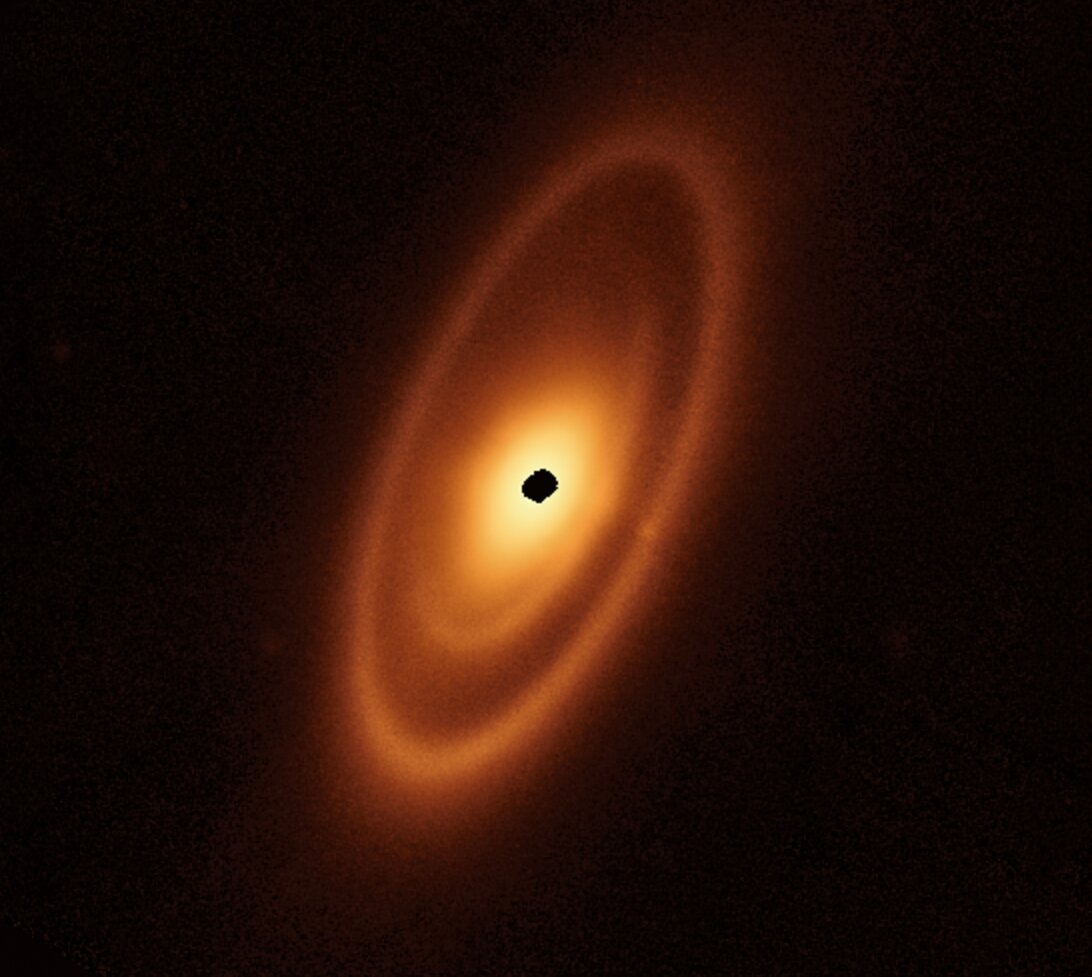The James Webb Space Telescope has studied in detail the gas-dust disk orbiting the Fomalhaut star. It discovered that three powerful asteroid belts were hiding in it. In addition, planets unknown to this day may be hiding there.

Asteroid belts near the star Fomalhaut
Fomalhaut is the brightest star of the southern constellation Piscis Austrinus. Recently, scientists sent the James Webb Space Telescope to it in order to explore the gas-dust disk and the asteroid belt discovered earlier. But suddenly it turned out that this system was much more complex than it was thought.
As scientists have found out, the Fomalhaut system extends around the star at a distance of 23 billion km. This is 150 times more than the distance from the Earth to the Sun. Within this radius there are as many as three asteroid belts; previously, only the outer one was known.
This belt turns out to be twice as powerful as the one that exists in the solar system in the orbit of Neptune. Scientists are convinced that the presence of a large amount of dust and debris in it is a consequence of the collision of large bodies.
History of Fomalhaut research
Fomalhaut is a young and hot white star. For the first time, scientists learned that a gas-dust disk was around it in 1983 during observations made by NASA’s infrared astronomical satellite IRAS. Then this discovery was proved by a number of ground-based telescopes.
The asteroid belt, which is located in this ring, was discovered much later during the observation of Fomalhaut by the Hubble orbital telescope and the ALMA radio antenna array. But none of them could see the internal structure of the disk. For this, James Webb was needed, working in the infrared part of the spectrum.
Now Hubble, ALMA and Webb have joined forces to form a holistic view of how the debris disks around Fomalhaut and other similar stars are arranged. And most of all scientists are interested in the question of whether they have newborn planets.
Where are the planets?
In fact, one planet in the gas-dust disk surrounding Fomalhaut was found back in 2008. But Hubble hasn’t seen it since 2014. However, a new study may shed light on this mysterious fact. The fact is that the image obtained by James Webb contains a large number of gaps in which, according to scientists, the planets are hiding.
Given the presence of asteroid belts, they just have to be there. After all, in the solar system, it is the gravity of Jupiter that leads to the outer boundary of the inner asteroid belt, and Neptune similarly affects the Kuiper Belt.
But the planet that was noticed near Fomalhaut in 2008 could not be the only celestial body at all. James Webb’s images show a huge gas and dust cloud in approximately the same place. Scientists suspect that the object observed earlier is a trace of the collision of two large fragments.
According to phys.org
Follow us on Twitter to get the most interesting space news in time
https://twitter.com/ust_magazine

